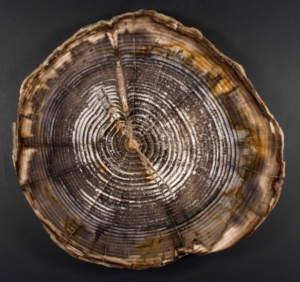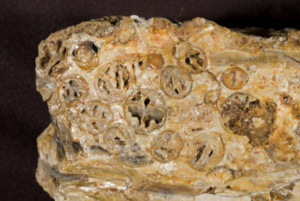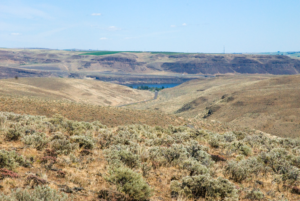Introduction
In modern times, the central part of Washington State is an arid, desert landscape. Approximately 16 million years ago during the Miocene epoch, things were much different. The land was covered by verdant forests containing trees whose modern relatives are found in various parts of the northern hemisphere – some are widespread, while others have more restricted ranges in eastern Asia, eastern North America, and/or western North America.
The region has undergone many upheavals since the time of the Miocene forests. Large eruptions of lava covered the land; the Cascade Mountains rose and created a rain shadow that blocked off the moisture coming in from the Pacific Ocean; global climate cooled and the northwest summers became drier, and ultimately the ice ages set in. These changes resulted in the regional extinction of many of the trees that were once native to the northwest. While the ancient forests are gone, their history is preserved by the fossil wood deposits found in many parts of the region, as well as by deposits of fossilized leaves and pollen found in ancient lakebeds.
The three parts attached here focus on the fossil woods of eastern Washington. The first part provides background information and a short description of the major wood deposits; the second part provides scientific descriptions and images for each of the wood types currently recognized from the region; and the third part is an illustrated glossary of the terminology used in the wood descriptions. Over the years we have learned quite a bit about the world of the Miocene, but there is still much that remains to be discovered.



